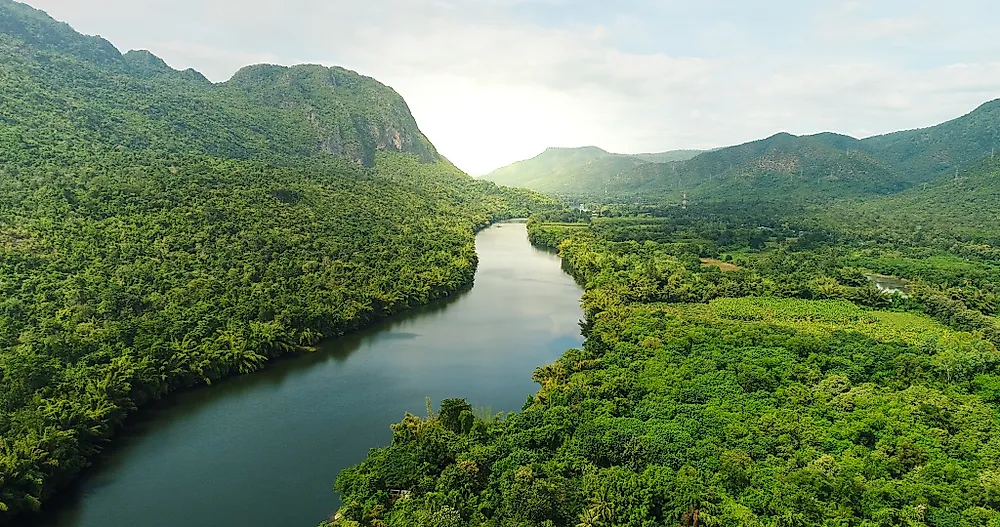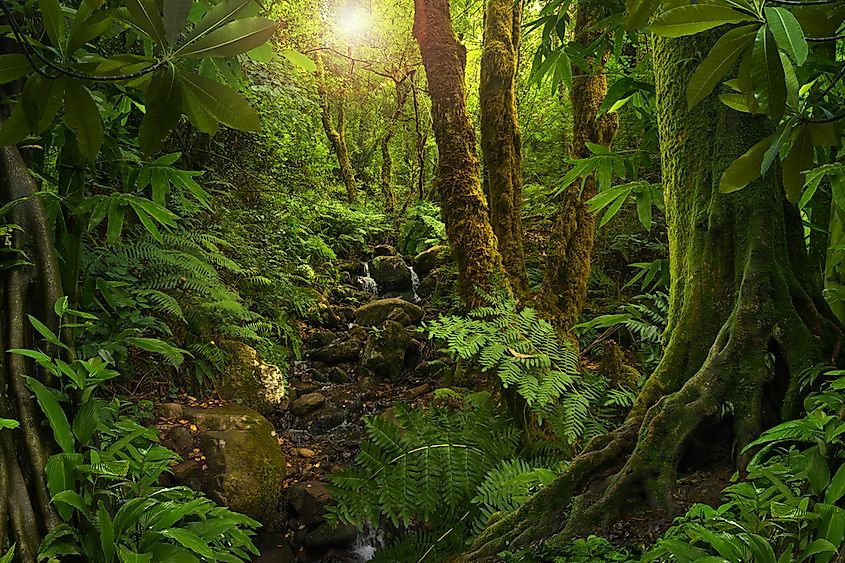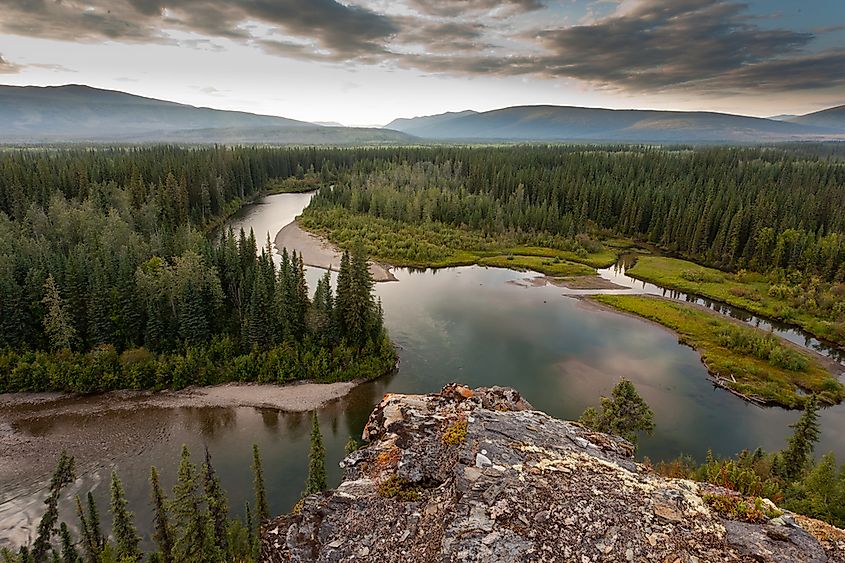What Are The Three Main Types Of Forests Based On Latitutde?

Forests cover about 30% of the Earth's land area. Despite covering a relatively small portion, forests support more animal and plant species than any other terrestrial ecosystem. For example, tropical forests alone support more than half of the world’s animal and plant species. Forests can be classified into three main types based on the latitudes where they are located: tropical forests; boreal forests; and temperate forests.
Tropical Forests

Tropical forests exist between the Tropic of Cancer and Tropic of Capricorn, and usually between the latitudes of 10 degrees north and 10 degrees south of the equator. Tropical forests include four subgroups: semi-evergreen rainforests; evergreen rainforests; seasonal rainforests; and monsoon rainforests. The main differences between these subgroups is the length of the dry season. For example, evergreen forests have no dry season, whereas semi-evergreen rainforests have the longest dry season of the tropical forest subgroups. Tropical forests have the highest diversity of both flora and fauna of any type of forest. Examples of tropical forests include the Amazon rainforest and the Congo rainforest.
Boreal Forests

Boreal forests exist in the high northern latitudes and are bound by the latitudes of 50 degrees north and 70 degrees north. Due to their proximity to the Arctic, boreal forests experience low temperatures and long winters. The mean annual temperature of boreal forests ranges between 23 °F and 41 °F. Extreme temperatures experienced during winters in boreal forests are sometimes lower than those experienced in the tundra. The trees found in boreal forests are mainly coniferous, which can survive the freezing temperatures and include pine, fir, and spruce. Annual precipitation in boreal forests is low and ranges between 7.8 and 30 inches. Countries that contain boreal forests include Canada, Russia, Mongolia, Scotland, Iceland, the United States, Sweden, and Japan.
Temperate Forests

Temperate forests, as the name alludes, exist in the world’s temperate regions, namely North America, Western Europe, and Northern Asia. Temperate forests are characterized by experiencing well-defined four seasons, with winter being particularly distinctive. Annual precipitation in temperate forests ranges between 30 and 50 inches. Temperate forests include five subgroups: temperate coniferous forests, dry conifer forests, temperate broad-leaved forests, evergreen broad-leaved forests, and Mediterranean temperate forests. These subgroups are primary differentiated by the annual amount of rainfall. The tree species found in temperate forests include maple, oak, beech, cottonwood, and elm, and these forests also support a large variety of animal species.
Deforestation
Deforestation in the form of burning and illegal logging is the main threat faced by forests around the world. Governments have introduced measures aimed at curtailing these destructive practices, but the destruction of forests remains a concern. For example, researchers believe that forests in certain regions of Southeast Asia could disappear by the next century based on the current rate of deforestation.











